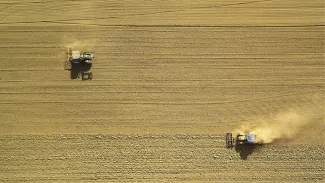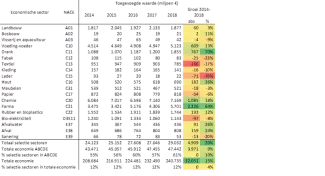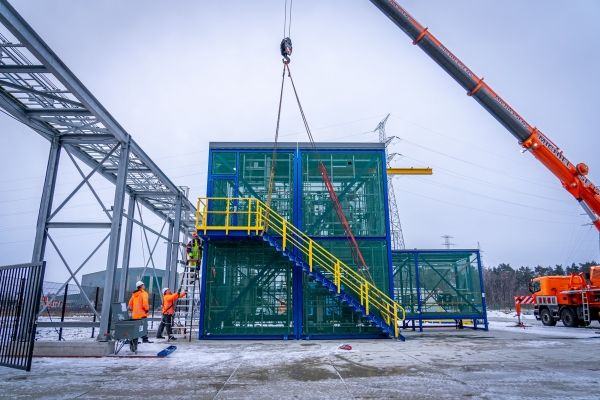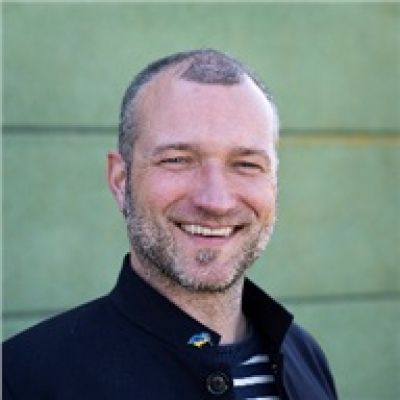First structure overview shows performance of Flemish bioeconomy
For the first time, the numerous streams of renewable raw materials and processes in the Flemish economy have been mapped and their economic value for Flanders has been estimated.

The study was done by ILVO and VITO at the request of Flemish minister Jo Brouns and his predecessor, both responsible for Work, Economy, Innovation & Agriculture. The annual recurrence of this study makes it possible to implement a targeted, stimulating policy and evaluate its impact. The B2BE Facilitator, the platform set up a year ago to link suppliers of raw materials to potential processors, can also use the data from the extensive study to optimise its operation.
Flemish Minister for Employment, Economy, Innovation & Agriculture Jo Brouns: "The transition to a sustainable and biobased economy is essential. This way, we avoid waste and fossil raw materials while converting the valuable components from organic material into materials, food, medicines, etc."
The study by ILVO and VITO shows that there is a lot of interest in the Flemish economy to make that switch. The biobased economy grew twice as much as the overall Flemish economy between 2014 and 2018. Moreover, the chemical sector, which traditionally relies heavily on fossil raw materials, appears to be the second largest consumer of biomass after the food industry. Jo Brouns: "With the Flemish bioeconomy policy plan, we are further building bridges between these sectors and strengthening our technical know-how. A real win-win situation for Flanders, for the sectors and for society."
The final report of the study (Dutch only) was presented on 25 October 2022 at the Royal Flemish Academy of Belgium for Sciences and Arts in Brussels.
Renewable raw materials?
Renewable raw materials or biomass come mainly from agriculture but also from forestry, landscape management, fisheries, aquaculture and the waste and residue streams from processing. In the biobased economy, often simply called bioeconomy, that organic material is converted into all kinds of products such as food and materials but also semi-finished products such as isolated molecules and renewable raw materials.
Agriculture by far the largest biomass producer
It is striking that the forestry, fishery and waste treatment sectors produce only 2% of biomass in Flanders. Their share is negligible compared to the biomass production by Flemish agriculture and horticulture (98%). That sector produces on 46% of our land area 21 Mtonne of biomass main streams, the majority of which is vegetable (70%) and another 21 Mtonne of so-called biomass side streams, largely in the form of animal manure (82%).
The report provides a detailed overview of these main and by-product streams for each producing sector.
Chemicals largest non-food processor
The processing sectors and their biomass and product streams are more difficult to map and will be explored in greater depth in subsequent editions of the monitoring. Broadly speaking, these are the food including beverages, feeds, oil and fats; textiles, paper, wood, chemicals, pharmaceuticals, plastics, bioenergy and waste treatment sectors.
The food industry remains the main consumer of agricultural and horticultural biomass. A nuance here is that certain sectors that fall under food industry do not always produce (only) food. An example is the oil industry, which produces oil for both food and technical applications.
After the food industry, the chemical sector emerges prominently as a customer. It uses biomass to produce large volumes of mono-fatty acids, fertilisers, bioethanol and biodiesel. However, the chemical sector is still largely dependent on fossil raw materials and is therefore a 'hybrid' bioeconomy sector.
Economically performing and strongly growing sector
Economically, the Flemish bioeconomy performed well in 2018. The food sector creates the largest added value, turnover and employment. In turn, the biobased pharmaceutical sector has the highest labour productivity (€450k/employee). In relative terms, the Flemish bioeconomic sectors are all doing significantly better than the European average and often better than our neighbouring countries. In terms of agriculture, Flanders only has to surpass the Netherlands.
In the period 2014-2018, the added value of these sectors also rose sharply, with the beverage sector (70%) as the main outlier. The food, wood and bio-based pharmaceutical sectors also experienced strong growth. The overall Flemish economy did well during the period, but the Flemish bioeconomy did more than double.
It is looking forward to the figures from 2020 onwards to evaluate the effects of the corona crisis and the war in Ukraine. International trade is also very important for the Flemish bioeconomy.

Demand exceeds supply: the highest bidder wins?
This study makes it clear that demand for biomass in Flanders far exceeds supply. It is therefore important to consciously choose for which applications the valuable biomass will be used. One useful framework for this is the principle of closed material cycles. The aim is to use as little 'new' primary biomass as possible by making products last as long as possible through reuse and recycling. A second framework is the cascade principle in which human food, then feed and only in last place energy production stand as meaningful applications for biomass.
VITO researcher Dieter Cuypers: "In reality, however, in the free market you see the economic logic at play: the highest bidder wins and that is not necessarily the most sustainable one. Every project should be evaluated critically and with systemic glasses so that investments in the bioeconomy effectively contribute to a more sustainable world."
In this respect, it is important not to focus unilaterally on climate and on replacing fossil raw materials with any biomass, but to look at all the valuable components contained in different biomass streams and choose the most meaningful valorisation path for them. Dieter Cuypers (VITO): "Today, there is a lot of enthusiasm on the market for biofuel and bioplastics, but from the biomass point of view these are not the most interesting applications. Biomass is a broad concept and from a chemical point of view it contains a wealth of interesting atoms. You have carbon but also protein, phosphorus, nitrogen, etc. It is a waste to reduce that richness to carbon atoms for biofuel and plastics."
Monitoring 2018 and 2019
In 2020, the Flemish Government launched the Flemish bioeconomy policy plan that aims to accelerate the development of this young sector in Flanders. In order to implement a stimulating policy based on figures, the competent department of Economy, Science and Innovation (EWI) commissioned VITO and ILVO to monitor developments in the bioeconomy. The report now presented is a baseline measurement based on figures from the year 2018. It uses official sources and statistics, supplemented by sector-specific info in case it was available and released.
The overview is not exhaustive and some processes or flows need further exploration. This will be done in the annual updates for which ILVO as implementer and the B2BE Facilitator as client will be responsible. The 2019 monitoring is now being worked on and in it the focus will be on more closely unravelling the flows going in and out of chemistry, plastics and biobased pharmaceuticals.
Have a look at the presentation of the lunch talk Dieter Cuypers (VITO) gave today at the interactive event on bioeconomy in Flanders (Dutch only).



